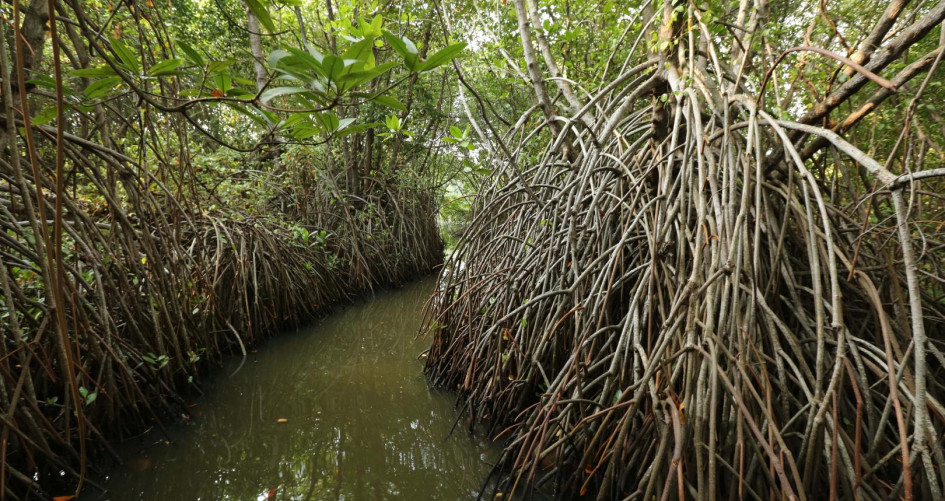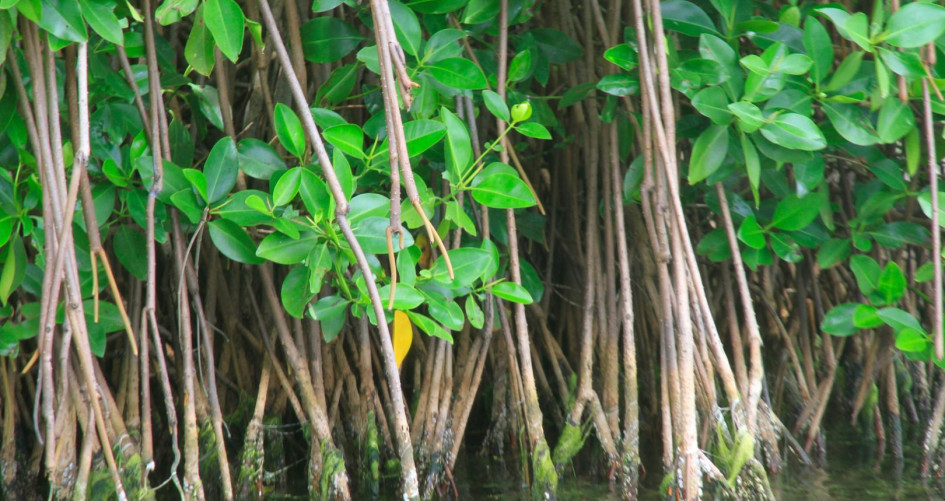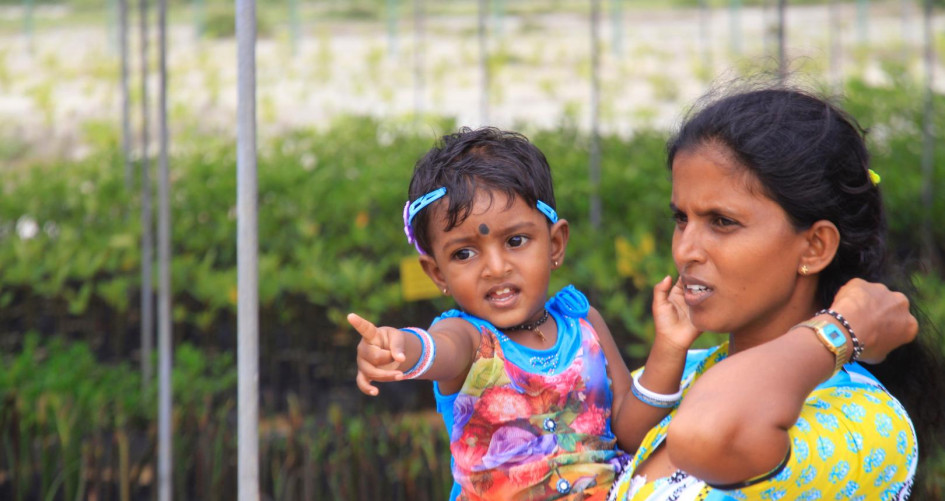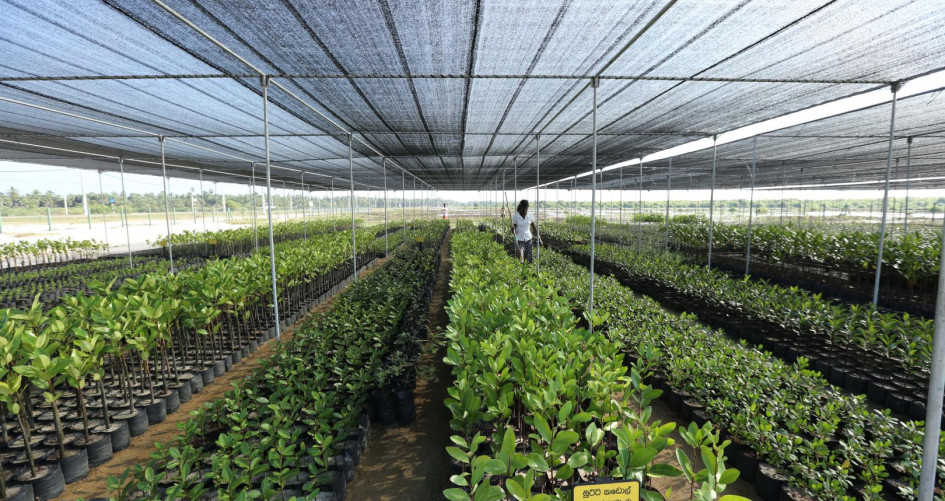Seacology, a nonprofit environmental conservation organization, is helping Sri Lanka become the first nation in history to preserve and replant all of its mangrove forests.
As a result, Sri Lanka is on a path to be a model for other countries wishing to build conservation capacity and economic prosperity in communities where healthy mangroves are most critical – small fishing villages.
Seacology helps mitigate poverty in coastal communities by providing sustainable livelihoods training and microloans in exchange for leadership in community mangrove conservation cooperatives. Through these conservation cooperatives, programme participants lead their communities in mangrove propagation, reforestation, and protection.
The livelihood training and microloan programme enables beneficiaries to create or expand sustainable businesses, contributing to greater financial stability, better nutrition and health, increased economic security for families, and improved resilience against destructive storm surges.
Key facts
- Over 14,500 hectares of mangrove forest have been demarcated and educational sign boards have been installed in almost 50 lagoons and estuary systems;
- In 2017, the project propagated 703,800 mangrove seedlings;
- More than 7,900 women and young people have been trained in mangrove conservation and 2,893 have received microloans to create or expand sustainable businesses and foster financial stability.
The problem
The global importance of mangroves lies in their ability to sequester large amounts of carbon for long periods of time. It was originally estimated that mangroves store three to five times more carbon per hectare than do tropical rainforests. However, more recent studies have concluded that mangroves can store up to 50 times more.
When disturbed, mangroves release a tremendous amount of carbon dioxide, hastening the advance of climate change. While mangroves only comprise 0.7% of global forest area, they may store 20 billion tonnes of carbon worldwide, which is equivalent to roughly 2.5 times current annual global greenhouse gas emissions.
Alarmingly, in the past 50 years, the world has lost half of its mangrove forests at a rate of 1% per year, due to conversion to shrimp farms, croplands, waterfront development, and deforestation for fuel wood and charcoal production. If current mangrove deforestation rates persist, nearly all unprotected mangroves could be gone within the next 100 years.

The solution
By providing job training and microloans to impoverished women and young people through village-based Community Benefit Organizations (CBOs), Sri Lanka will become the first nation in the world to protect all of its mangroves. In exchange for receiving economic development opportunities, these women and young people will actively participate in the mangrove conservation activities coordinated by their CBOs. The goal is to set up a CBO in every coastal village in Sri Lanka that lies adjacent to a mangrove lagoon. The CBOs are comprised of approximately 10-20 people (almost entirely women) per village and coordinate all economic development and mangrove conservation activities.
In protecting its mangroves, Sri Lanka will make coastal communities more resilient by promoting improved fishing and agriculture, fostering sustainable livelihoods that can withstand shocks and stresses, and ensuring a healthier environment in which communities can thrive.

Helping the planet
Mangrove forests are found at the confluence of fresh and salt water in the planet’s tropical belt. They play an important ecological role both locally and globally, providing a home for many birds, crustaceans, reptiles, and mammals to thrive at the junction between land and sea. Mangroves strengthen other connected marine ecosystems, such as coral reefs, and serve as a nursery ground for fish. Reef fish often spawn in seagrass beds and, after hatching, the juvenile fish move to the mangroves where there is an abundance of food and shelter from predators. In the absence of mangroves, juvenile fish move directly to the reef where they are exposed to more predation. The United States National Oceanic and Atmospheric Administration estimates that the livelihoods of 30 million people worldwide are entirely dependent on coral reefs, which are in turn supported by mangroves.

Helping people
Mangroves are a source of livelihood and food for thousands of small communities in Sri Lanka. It has been estimated that healthy mangroves provide an average of USD 2,100 per household per year in protective value against coastal floods (in terms of avoided damage to property, livelihood assets, and public infrastructure). Mangroves not only benefit fishing communities, but also help farming communities by stemming erosion and salt water intrusion into productive soils. Conserving Sri Lanka’s mangrove forests will provide a buffer against coastal flooding and will help to prevent deaths, increase food security, and reduce property damage from natural disasters.
In tandem with mangrove conservation, Seacology will help mitigate poverty in coastal communities by providing sustainable livelihoods training and microloans to 15,000 women and young people in exchange for their leadership in community mangrove conservation cooperatives. The programme participants will lead their communities in mangrove propagation, reforestation, and protection. As a result of the livelihood training and microloan program, beneficiaries will be able to create new or expand existing sustainable businesses, which will lead to greater financial stability. This in turn will lead to better nutrition and health, increased economic security for families, and benefit entire communities better protected against destructive storm surges.

Spillover effect
Sri Lanka is the first nation in history to make a pledge to preserve and replant all of its mangrove forests. In doing so, the country will set an example for other nations, and be a leader in sequestering carbon and mitigating climate change.




Images owned by the activity partners, all rights reserved.







